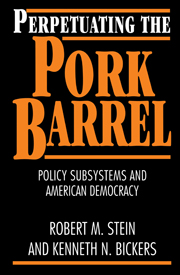8 - Policy subsystems in practice and democratic theory
Published online by Cambridge University Press: 05 June 2012
Summary
Americans have a love–hate relationship with their government. They tell pollsters that they disapprove strongly of Congress as a whole, but vote to reelect their own members of Congress. They decry the role of special interests in influencing congressional decision making, but oppose public funding of federal campaigns. They believe that much of what the government does is unnecessary and wasteful, but demand that programs benefiting themselves be protected. The policy subsystems that we analyze in this book contribute to this ambivalence about our political system. They are viewed as insulated from popular control, self-serving, and a major contributor to the country's runaway deficits. At the same time, they are given responsibility for designing and implementing policies in response to public problems.
MYTHS ABOUT FEDERAL ASSISTANCE PROGRAMS
Given this ambivalence, it is important to separate the real problems from the mythology associated with policy subsystems. Perhaps the biggest myth is the contention that policy subsystems in general are a major contributor to the federal deficit. The fact is that a very small number of domestic programs account for virtually all of the growth in domestic spending. Figure 8.1 shows that three programs – Social Security, Medicare, and Medicaid – are responsible for the vast majority of the growth in domestic spending during the 1980s. These three programs account for 85 percent of all growth in spending for domestic financial assistance programs from 1983 through 1990.
- Type
- Chapter
- Information
- Perpetuating the Pork BarrelPolicy Subsystems and American Democracy, pp. 139 - 152Publisher: Cambridge University PressPrint publication year: 1995



